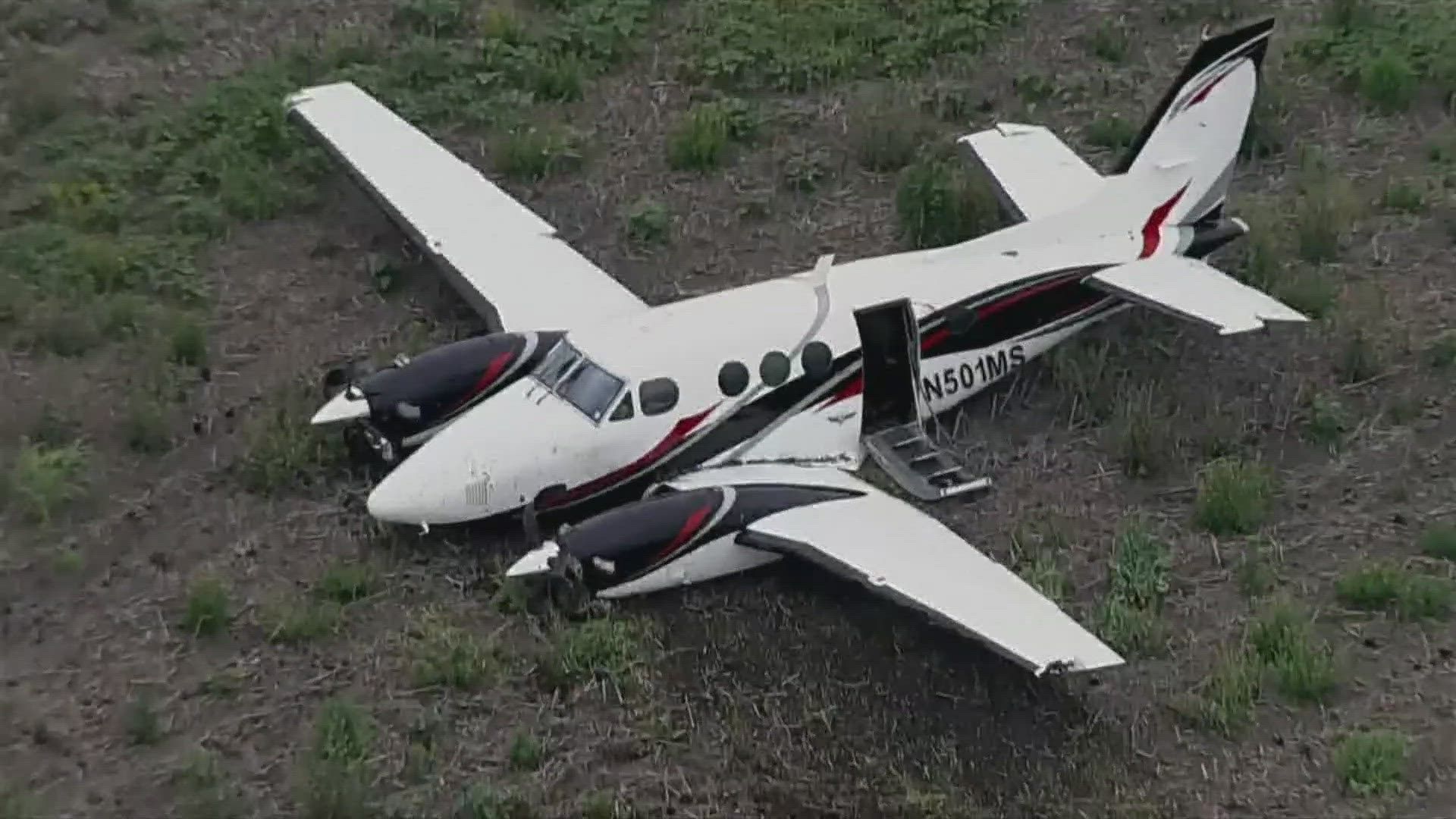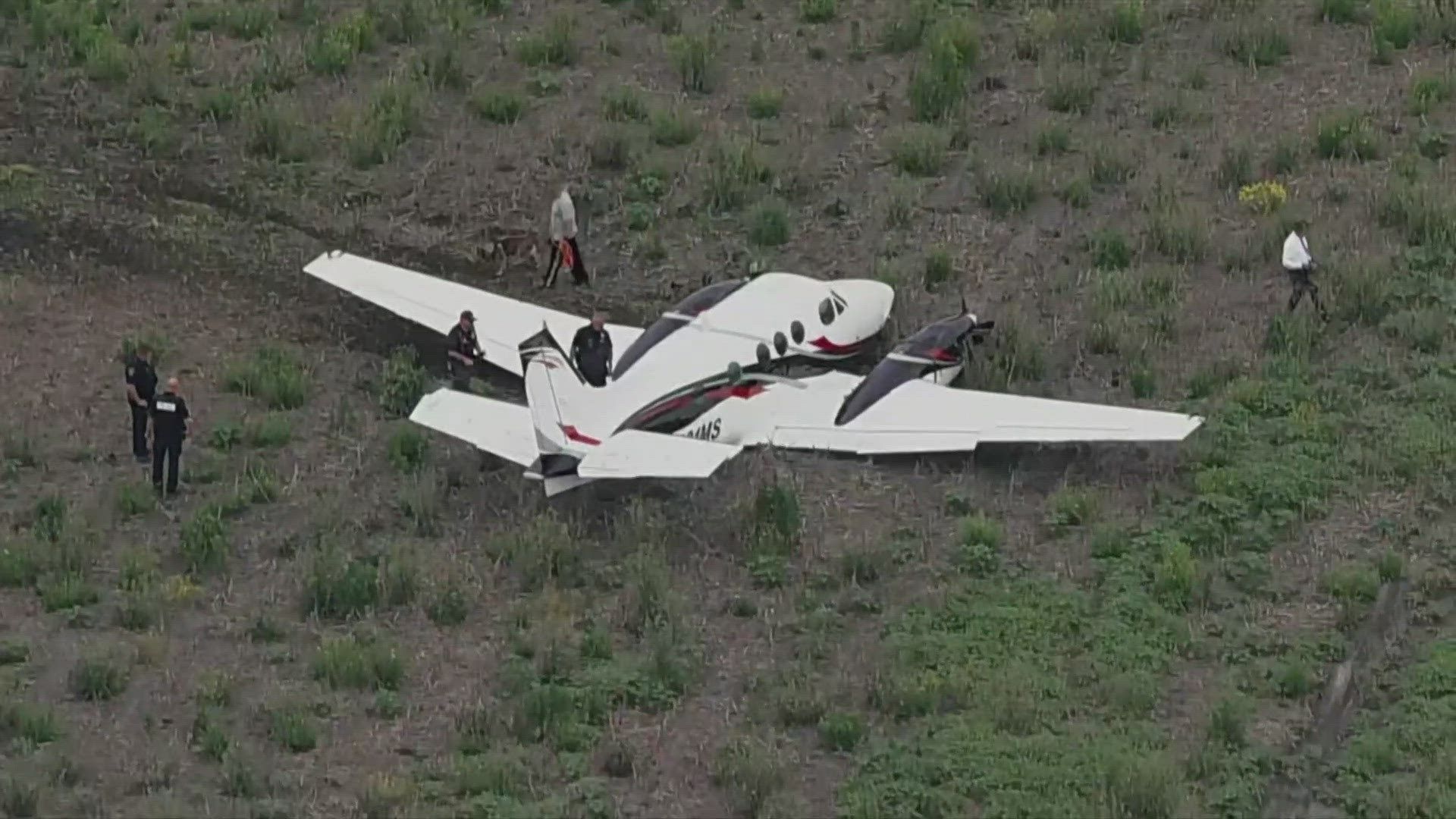ARFF Daily News
Published on:
Today is Tuesday the 29th of April, 2025
These are the stories for today...
Be safe out there!
Tom
Investigation underway after plane from Mexico City crashed in field near Lancaster airport, FAA says
The incident happened near Lancaster Regional Airport shortly after 4 p.m. Monday, according to the FAA.
Author: Rachel Snyder
LANCASTER, Texas — A plane carrying three people crashed into a field Monday afternoon in North Texas, prompting an investigation, according to the Federal Aviation Administration.
The FAA says a Beechcraft King Air plane with three people on board crashed shortly after 4 p.m. into a field near the Lancaster Regional Airport. According to NTSB, the flight originated in Santa Lucia Mexico City Airport and was bound for Dallas Love Field.
Lancaster police say the plane made an emergency landing near Greene Road and Pinto Road near the Lancaster Regional Airport around 3:30 p.m.
Police say the three passengers were evacuated by EMS staff on scene and taken to local hospitals with non-life-threatening injuries.
The National Transportaiton Safety Board released a statement saying they are aware the plane reported engine trouble before landing in the field. It says the flight originated in Santa Lucia Mexico City Airport and was headed for Dallas Love Field.
"We are gathering information on the incident to determine if there's substantial damage to the airplane or a serious injury to any of its occupants," the statement from NTSB reads. "If either of those criteria are met, it will be classified as an accident and the NTSB will open an investigation."
No information about what led up to the crash was immediately available.
The FAA is investigating the crash.
https://www.wfaa.com/article/news/local/dallas-county/plane-crashed-into-field-lancaster-faa-investigating/287-c438e649-eefe-4af8-b9fb-07f4229d73ce


Phone Catches Fire On Hawaiian Airlines Airbus A330 Landing In Tokyo
By Jake Hardiman
A recent Hawaiian Airlines flight from Honolulu to Tokyo took an eventful turn just before landing when a passenger's phone caught fire onboard. Luckily, the situation was able to be quickly contained by the flight's crew, whose swift actions meant that the aircraft in question was able to land safely with no need for an evacuation. Still, the incident did result in the return flight being delayed by several hours.
While no harm came to the aircraft or anyone on it as a result of this incident, it is emblematic of a worrying recent trend that has seen the number of onboard fires caused by thermal runaways in phone batteries (or similar devices) in the last few years. This has become something of a hot topic (pardon the pun) among aviation regulators of late, with some already having changed their rules as a result.
The Fire Broke Out Just Before Landing
Hawaiian flight HA457 is a regularly scheduled international flight that originates at the carrier's main hub: Honolulu International Airport (HNL). Its destination is Tokyo Haneda Airport (HND) in Japan, with Flightradar24 showing that it has a scheduled duration of eight hours and 50 minutes. After departing Honolulu at 15:35, it crosses the International Date Line and reaches Tokyo at 19:25 the next day.
The flight operates daily, and the iteration leaving on April 27th took off more or less on schedule, at 15:44. Its arrival into Tokyo was even more punctual, landing 43 minutes early at 18:42 the next day after just eight hours and eight minutes in the air. However, this landing was not without its drama, with The Aviation Herald noting that, during the descent, a passenger's phone caught fire in the cabin. According to reporting by The Mirror, a spokesperson for Hawaiian Airlines confirmed that:
"Prior to HA457 arriving at Haneda Airport [on] April 28th, crew members reported an electrical smell coming from a guest's mobile device that became lodged in a seat. Out of an abundance of caution, our crewmembers declared an emergency to obtain priority handling at the airport."
The Incident Delayed The Return Flight
According to the Aviation Safety Network, the flight in question had 140 people onboard, and was operated by a 2015-built Airbus A330-200 twinjet that bears the registration N375HA. Thankfully, the members of the flight's crew succeeded in extinguishing the fire, with the device subsequently being placed in a fireproof bag in order to ensure the safety of those onboard in the event of a flare-up.
According to The Aviation Herald, the flight then made a safe landing on runway 34R at Tokyo Haneda Airport . At the time of the incident, runways 22 and 23 at the facility were being used to handle arriving traffic, but, with the flight's crew having declared an emergency and asked for priority handling, this offered a simpler and more direct approach to get the plane on the ground quicker. As noted in the table below, the work to secure the cabin after the landing delayed the return flight.
Hawaiian Airlines Experienced A Similar Incident Last Year
Last September, a similar issue arose onboard a Hawaiian Airbus A330-200 that was flying from Honolulu to Portland International Airport (PDX) in the US federal state of Oregon. This time, the offending item was an iPad rather than a phone, but, in a striking parallel, the device began emitting smoke just before landing. While the fire was, again, able to be contained, and the plane touched down safely, passengers criticized the airline's lack of preparedness in dealing with the situation.
At the start of the year, the subject of lithium-ion batteries in mobile phones and tablets causing fires onboard commercial aircraft was thrust firmly into the spotlight after an Air Busan Airbus A321 was destroyed in a ground fire by such an incident. While everyone onboard was safely evacuated, the scenes prompted swift action, with airlines and regulators updating their policies as a result.
https://simpleflying.com/phone-fire-hawaiian-airlines-airbus-a330-tokyo/

NTSB Final Report: Cozy Cub
Witness Reported The Airplane Was Flying Low And Was In A Left Bank When It Struck The Power Line
Location: Parsons, Kansas Accident Number: CEN25LA064
Date & Time: December 28, 2024, 13:25 Local Registration: N719LB
Aircraft: Cozy Cub Aircraft Damage: Substantial
Defining Event: Collision during takeoff/land Injuries: 1 Serious
Flight Conducted Under: Part 91: General aviation - Personal
Analysis: The pilot was on final approach to land when the airplane collided with power lines and impacted terrain. The airplane sustained substantial damage to the wings and fuselage and the pilot was seriously injured. When interviewed, the pilot stated he had no recollection of the accident. A witness reported the airplane was flying low and was in a left bank when it struck the power line. The witness thought the engine was running and the propeller was spinning at the time of the collision. A postaccident examination did not reveal any mechanical anomalies that would have precluded normal operations. The pilot did not return a completed NTSB Accident/Incident Report form 6120.1/2.
Probable Cause and Findings: The National Transportation Safety Board determines the probable cause(s) of this accident to be -- The pilot’s failure to maintain clearance from power lines while on final approach to land.
FMI: www.ntsb.gov

Today in History
73 Years ago today: On 29 April 1952 Pan Am flight 202, a Boeing 377 Stratocruiser, crashed following an in-flight break-up 450 km south-west of Carolina, MA, Brazil, killing all 50 occupants.
Date: Tuesday 29 April 1952
Time: 04:40
Type: Boeing 377 Stratocruiser 10-26
Owner/operator: Pan American World Airways (Pan Am)
Registration: N1039V
MSN: 15939/12
Year of manufacture: 1949
Total airframe hrs: 6944 hours
Engine model: P&W R-4360-B6
Fatalities: Fatalities: 50 / Occupants: 50
Other fatalities: 0
Aircraft damage: Destroyed, written off
Category: Accident
Location: 450 km SW of Carolina, MA - Brazil
Phase: En route
Nature: Passenger - Scheduled
Departure airport: Rio de Janeiro-Galeão International Airport, RJ (GIG/SBGL)
Destination airport: Port of Spain-Piarco Airport (POS/TTPP)
Investigating agency: CAB
Confidence Rating: Accident investigation report completed and information captured
Narrative:
Pan Am flight 202, a Boeing 377 Stratocruiser, crashed following an in-flight break-up 450 km south-west of Carolina, MA, Brazil, killing all 50 occupants.
Flight PA202 originated at Buenos Aires, destination New York, with en route stops scheduled at Montevideo, Uruguay; Rio de Janeiro, Brazil, and Port of Spain, Trinidad. The flight departed Buenos Aires 18:52 UTC. After a scheduled stop at Montevideo the flight arrived at Rio de Janeiro at 01:05, April 29. The flight departed Rio de Janeiro at 02:43 for a direct off-airways flight to Port of Spain. At 06:16 the flight reported abeam of Barreiras, flying at 14,500 feet under VFR conditions and estimating abeam of Carolina, Brazil, at 07:45 UTC. This was the last known message from the flight. The aircraft was later found to have crashed in dense jungle.
PROBABLE CAUSE: "The separation of the no.2 engine and propeller from the aircraft due to highly unbalanced forces, followed by uncontrollability and disintegration of the aircraft for reasons undetermined."

